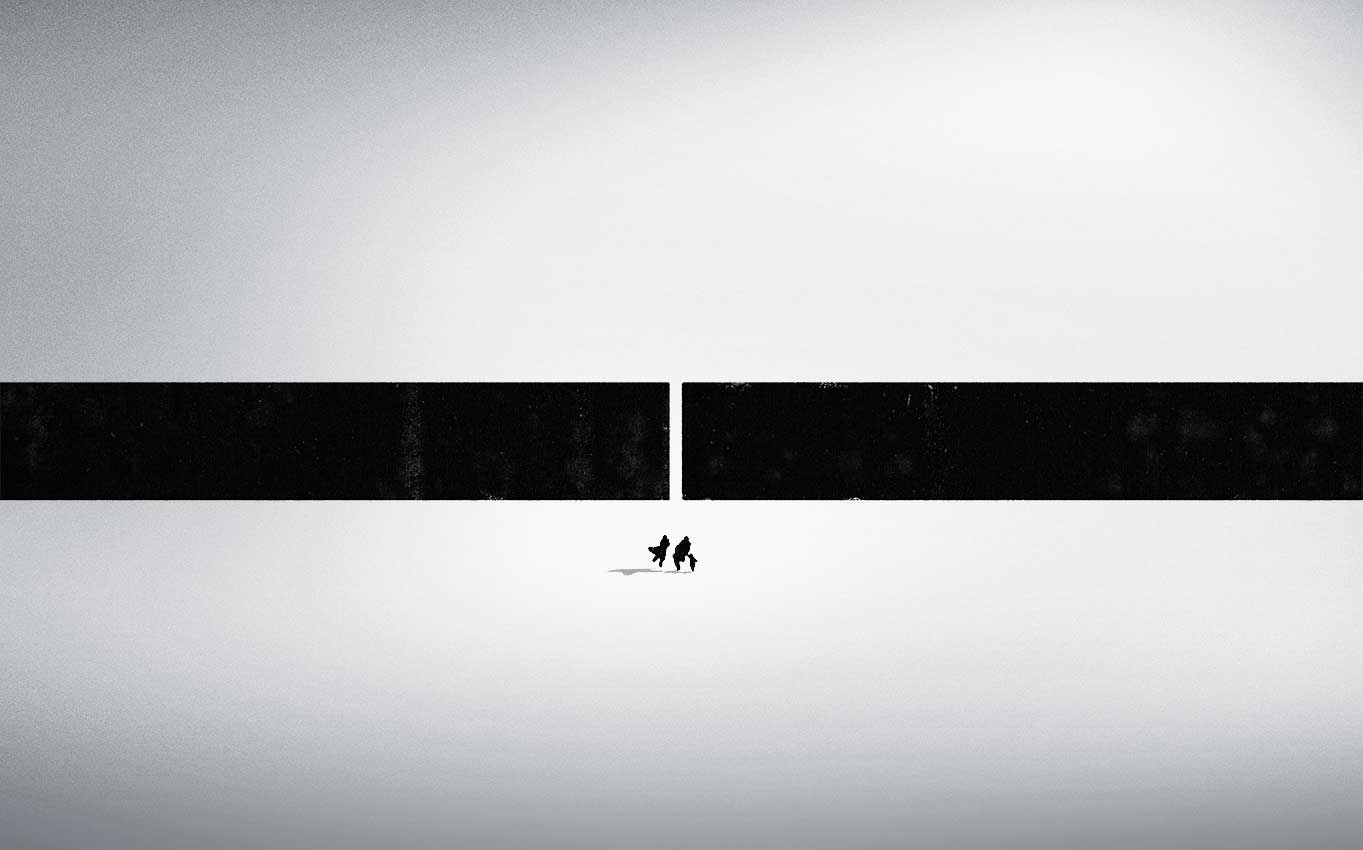





******
“Intelligently moulded, filmically provocative, entertaining and informative”
Tue Steen Müller, Filmkommentaren
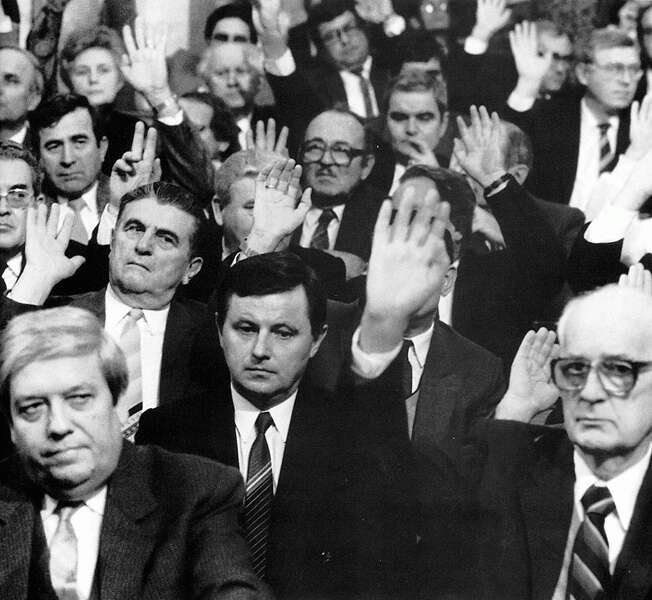
“The story of possibly the last victim of the iron curtain, who paid the supreme price”
Natalie Yahya Rosendahl, Magasinet ØST
****
”Reconstructions laden with reality and archive material buried beneath the iron curtain in equal measure relate the tale of the demise of the Eastern Bloc. SPOILER ALERT: The wall comes down!”
Rikke Collin, Filmcitat
******
“Intelligently moulded, filmically provocative, entertaining and informative”
Tue Steen Müller, Filmkommentaren
*****
“They manipulate documentarism with perfect legitimacy, putting us on the same plane as the characters”
Klaus Rifbjerg, Ekko
****
”The mix of archive material and interviews works well”
Michael Søby, CPH-Culture
****
“The story of the huge role Hungary played in the fall of the iron curtain”
Bo Slagelse Pedersen, CinemaOnline














Crowd on the Berlin Wall
Crowd breaking through border fence
Guard tower, Berlin Wall
Gorbachev on the phone in office
Cutting barbed wire at the Austro-Hungarian border
Eric Honecker 1st of May celebrations, Berlin,1989
Imre Nagy grave, Budapest
Gorbachev shaking hands with Miklós Németh
Miklós Németh in the ministry basement, Budapest
The last refugee shot on the Austro-Hungarian border.
Gundula Schafitel, composite
Miklós Németh, composite
Miklós Németh in Parliament, Budapest, 1988
13 - 13
<
>
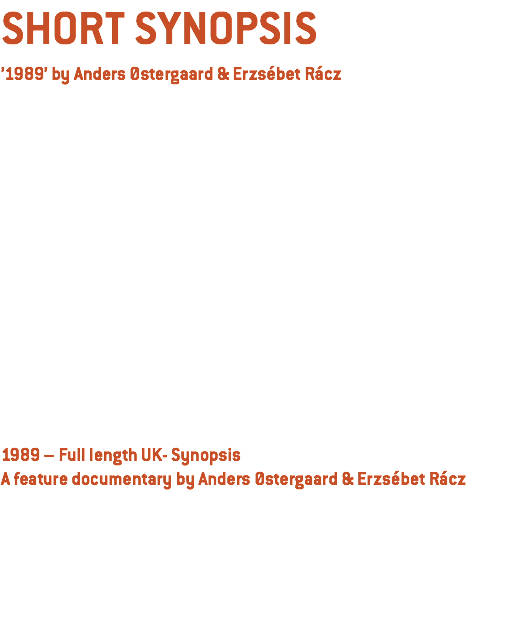
1989 is a feature-length documentary by Oscar-nominated director Anders Østergaard, who has made it his special trend to visualize the invisible and recreate the past to make it come alive before our very eyes. The film ventures deep into the high-risk political game that lead to the fall of the Wall and the reunification of Europe by visiting the secret rooms where political battles were fought and history made. The film uses a cutting edge approach to documentary recreation, which - intervowen with testimonials and archive material - forms a rich and cinematic tapestry of events. The two central ‘witnesses’ are former Hungarian prime minister, Miklós Neméth representing the macro political level, and Gundula, the surviving half of an East German couple, who were the last to fatally attempt to cross the border, representing the micro level .
The film opens in the marshlands between Hungary and Austria. The ageing iron curtain dividing East from West, is beginning to fall apart. The barbed wire is simply rusting away and the electronical warning system, once the pride of the border troops, is getting completely unreliable. Several times a day, hundreds of troops are rushed out in their trucks as the alarm bells ring, only to realize that another rabbit or wild boar has crossed the border. The electronic fence can only be fixed with spare parts from the West, bought with the hard-currency loans that are already strangling Hungary's frail economy. It is an absurd situation, and in Budapest, a newly appointed young prime minister, Miklos Nemeth, decides that enough is enough. Unexpected by all, this sends a ball rolling, that ten months later allows the people of Berlin to dance on the Brandenburg Gate. Before that, however, a desperate power game has taken place between the key government leaders of the time. Some of them pursued the hope for a peaceful Europe free from oppression and the nuclear menace, while others – rightfully - saw the collapse of everything they believed in, in fact the annihilation of the very states they ruled. For these men, it became – literally - a battle of life and death.
And so, the young prime minister soon learns that he has set himself up against formidable opponents, not just the disgruntled hardliners of his own party, but also against two seasoned dictators, Nicolae Ceausescu of Romania and Erich Honecker of the GDR. In their closed circles, they make no secret of their fury and systematically plot against the traitors of the socialist cause. What goes on in their respective conference rooms behind closed doors, and also in direct confrontation with the rebellious Hungarians, is what this film – in particular - will bring to life again.
In the summer of 1989, Miklós Neméth, decides to test his opponents and allows the Hungarian/Austrian borders to be opened for some days. This leads to the Pan European Picnic - and a welcome escape for many . A young East German couple with their little son, decide that this is their chance. They abandon their apartment, work, friends and family, and travel to Hungary, , but in the meantime, the border has been closed again. During a dramatic attempt to cross the border – which just a few days earlier had been open - the young man is shot dead. Based on this tragedy, Neméth understands, that the political power games have real consequences for real people, and that he needs to act. He decides to open the borders for good.
’1989’ is a high-politics drama about the collapse of the Iron Curtain. A young and unknown technoc trat, Miklós Neméth, is brought in to become Hungary’s new prime minister. He is to save the country’s appalling economy and soon decides to remove the massive – and expensive – border control apparatus from the state budget. He soon finds out, that this decision sets him up against formidable adversaries and communist hardliners. In the meantime, a young couple from East Germany is encouraged by the rumours that the Hungarian border to Austria will be opened for a few days to allow for the Pan-European picnic. Like thousands of other East Germans, they decide to make a go for it, but they are caught up in the political power-game that plays out behind closed doors in the Eastern Bloc. They young man is shot dead at the border, a tragic event that paradoxically accelerates Nemeth’s final decision to open the borders, and soon after the Berlin wall falls.
A feature documentary by Anders Østergaard (previously Tintin and Me, and Burma VJ). Anders Østergaard recreates the events of 1989 and invites the audience into the secret meeting rooms through a mixture of ’testimonials’, archive material, recreation, and reconstructed dialogues lip-synch’ed to archive footage of the real political key characters.

DIRECTOR Anders Østergaard
CO-DIRECTOR Erzsébet Rácz
SCRIPT ERZSÉBET RÁCZ & ANDERS ØSTERGAARD
PRODUCER Lise Lense-Møller
EDITORS Pernille Bech-Christensen, Szilvia Ruszev, Thomas Papape
DIRECTOR OF PHOTOGRAPHY Simon Plum
COMPOSER Stein Berge Svendsen
SOUND DESIGN Jørgen Bergsund & Rikard Strømsodd
MIX Tormod Ringnes
SYNCH EDITORS Réka Lemhényi, Mirja Gerle
COLORIST Rune Felix Holm
ONLINE Jakob Schaumburg
PRODUCED BY
Magic Hour Films by producer Lise Lense-Møller
in CO-PRODUCTION WITH
Gebrueder Beetz Filmproduktion by co-producer Christian Beetz
Proton Cinema by co-producer Viktória Petrányi & ESZTER GYÁRFÁS
Substans Film by co-producer Kristian Mosvold
Radiator Film by co-producer Henrik Underbjerg & Stefan Frost
WITH THE SUPPORT OF
The launch and distribution for "1989" is supported by The Danish Filminstitute, DR and Nordisk Film & TV Fond
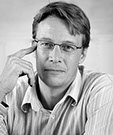
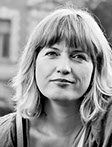
Born 1965. Graduated from the Danish School of Journalism in 1991. Awarded Best Documentary at Odense International Film Festival in 1999 for The Magus. Writer-director on the internationally awarded Tintin et moi (2003), and the documentary Gasolin (2006). 2008: Burma VJ, Joris Ivens Award and Movies That Matter Award IDFA, Amsterdam 2008 and Dox:Award and Amnesty Award, cph:dox, 2008, Editing award Sundance 2009- . Så kort og mærkeligt livet er, about the Danish poet Dan Turèll, was selected for the opening gala at CPH:DOX.
Anders Østergaard made his first big impression on Danish cinemagoers in 2006 with Gasolin’, a documentary about a singularly popular Danish rock band from the 1970s. Though Gasolin’, fronted by charismatic singer Kim Larsen, never gained a following outside Scandinavia, in Denmark they enjoyed years of Beatles-like stardom. Following its 1978 break-up, the group became part of the Danish cultural heritage. The Gasolin’ film drew 223,000 Danes to cinemas, an exceptionally high number, not just for a documentary but by any standard.
Mixing documentary footage with staged shots has been a hallmark of Østergaard’s films almost from the beginning. A rare exception was Gensyn med Johannesburg (1996). In this relatively conventional documentary, Østergaard follows the Danish filmmaker Henning Carlsen on a trip to South Africa to revisit some of the people who appeared in Carlsen’s Dilemma, a pioneering 1961 docudrama based on a novel by Nadine Gordimer and shot without the consent of the South African authorities. In his next film, Troldkarlen (1999), about the Swedish jazzman Jan Johansson, who died on an icy road in 1968 at the age of just 37, Østergaard truly came into his own as a documentary filmmaker wielding a remarkably wide repertoire of filmic ideas, including the use of staged shots. Notoriously, he recreated Johansson’s fatal car accident with a stand-in behind the wheel. This tendency was accentuated in Tintin et moi (2003), a film about Hergé, the creator of Tintin, that became Østergaard’s international breakthrough. Adding 3D effects to Hergé’s cartoons let the camera explore an otherwise two-dimensional universe, while a special animation technique brought the deceased cartoonist back to life. Hergé, whose real name was Georges Rémi, was almost as famous for being tight-lipped about his thought and feelings as for his comic adventures about the intrepid reporter Tintin. Accordingly, it caused widespread surprise in 1971 when an interview by a French student, Numa Sadoul, spontaneously evolved into a four-day talk. Without warning, the cartoonist had opened the floodgates, casting his 23-year-old listener in the role of psychoanalyst and commiserator. Østergaard wanted the audiotapes of this legendary interview to be the core of his film and, after long deliberation, the trustees of Hergé’s estate finally released them. But the Danish filmmaker wasn’t content simply to include
Hergé’s voice on the soundtrack. Using so-called sketch-line animation, he resurrected his subject as a speaking cartoon character, breathing life into material that, in the hands of a less inventive filmmaker, could easily have become just another dusty archival montage with talking heads.
Born in 1971 in Hungary. After German language and literature studies in Budapest, Jena and Hamburg she worked from 1994 in a theatre in Budapest as dramaturgist and as a professional literature translator. She also published novels in Hungarian language. 2001 she moved to Berlin and graduated from the German Film and TV Academy Berlin, DFFB, as a script writer. During her studies she wrote and directed sevaral short films. Her short The Pig (2010) won the Audience Award of the ARTE Film Festival.
Her first feature-length fiction film Für Elise (2012) was shown at many International Film Festivals and won the Main award and the Script award at the Festival of German Cinema. The script was also nominated for the German Film Award and Hartley Merill Award. She was co-writer at the feature length fiction Homeland, Sex and other Inconveniences (2012) Currently she is working on her first feature length documentary Left, Right, Left Right.










